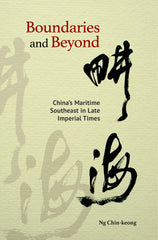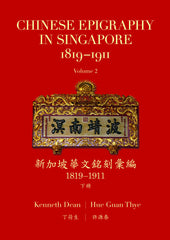NUS Press Highlights of 2016 December 27, 2016 10:30
While 2016 has proven to be a rather bleak and tumultuous year, we are proud to have published some books that will continue to have much bearing in the new year ahead.
ENVIRONMENT
All eyes will continue to be on Indonesia’s Peatland Restoration Agency as it implements plans of restoring peatland to prevent haze crises (like that of 2015) from engulfing the region again.
Two NUS Press books, Catastrophe and Regeneration in Indonesia’s Peatlands (edited by Kosuke Mizuno, Motoko S. Fujita and Shuichi Kawai) and The Oil Palm Complex (edited by Rob Cramb and John McCarthy) touched on some agricultural and labour challenges that Malaysia and Indonesia are facing within the oil palm industry and peatland agriculture. In his review of both books in The Jakarta Post, James Erbaugh commented that both titles “provide scholarship that elucidates the complexities of oil palm production, and the challenges presented by peatland agriculture as well as peatland restoration.”


POLITICS
Indonesia’s gubernatorial election is set to take place in February 2017 and Edward Aspinall’s and Mada Sukmajati’s edited volume, Electoral Dynamics in Indonesia will be handy for observers as it provides greater insight into the patronage systems and money politics at the grassroots level.

In the field of maritime developments: Tensions in the South China Sea will continue to have much bearing on US-China and China-ASEAN relations in 2017. Ng Chin-keong’s collection of essays, Boundaries and Beyond, provides a novel way of understanding the nature of maritime China, and the undercurrent of social and economic forces that have created new boundaries between China and the rest of the world.

Lastly, in light of the 29th Southeast Asian Games taking place in Kuala Lumpur next year, Stephen Huebner’s Pan-Asian Sports and the Emergence of Modern Asia, 1913-1974 explores the role international sporting competitions had in shaping discourses of nationalism and development across Asian states. As one of the first major studies of the history of sports in Asia, Dr Huebner’s book provides a compelling window into the intersection between sports and politics in the region.

SINGAPORE HISTORY
The history of pre-independence Singapore remained a staple to our publishing programme this year, with Timothy Barnard’s Nature’s Colony shedding much light on the Singapore Botanic Gardens' lively history. Professor Barnard examined the Gardens’ changing role in a developing Singapore—from colonial times under the charge of several colourful Superintendents and Directors, to today, as a World Heritage Site.

On a more personal level, social work pioneer Ann Wee reminisces about her eventful life in Singapore. Her memoir A Tiger Remembers ruminates on the Singaporean family, and presents the reader with a series of charming vignettes from her life that captures the nuanced transformation of Singaporean society over the years. These intimate recollections, all told in exquisite detail and rich with insight, are testament to the vibrant cultural heritage of the nation.

We are also proud to have published Professor Kenneth Dean and Dr Hue Guan Thye's two-volume set, Chinese Epigraphy in Singapore, 1819-1911, which has been described by Claudine Salmon, Director of Research Emeritus at the French National Centre for Scientific Research (CNRS), Paris to be a "a repository of Singapore cultural and historical heritage." The collation of over 1,300 epigraphic records is a breakthrough in the telling of the Singapore story and according to Prof Dean, "such inscriptions provide snippets of what life was like in 19th and early 20th century Singapore, and capture the diverse cross-section of society at that time."


SOUTHEAST ASIAN ART HISTORY
What importance does art hold in the representation of history?
In the context of the portrayal of Southeast Asia by its colonial masters, Sarah Tiffin’s Southeast Asia in Ruins explores how the British justified colonialism through imperial art. Dr Tiffin will be speaking at the National Gallery Singapore on 25 February 2017 about British artists' portrayal of Southeast Asian civilization(s) in ruins in Stamford Raffles' The History of Java, and the role that these artists (and their work) played in Britain’s imperial ambitions in Southeast Asia.

In 2017, photographers and photojournalists will continue to play a vital role in exposing the realities of an increasingly authoritarian Southeast Asia. Zhuang Wubin’s Photography in Southeast Asia will be a useful introduction to the discourse of photographic practices in the region as his survey provides insights into the role images play in shaping Southeast Asian society, culture and politics.

